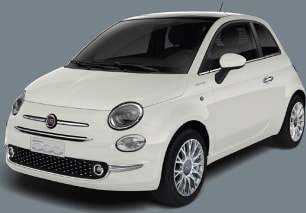Fiat claims the 500e will dash from 0-100km/h is 9.0sec which is pretty handy, and in typical EV fashion it’s cheekily rapid around town.
Given the transmission is a single-ratio auto, the placement of buttons in the centre of the dash to control its operation makes a lot of sense.
Acceleration is impossibly smooth, whether that’s from rest or in the cut-and-thrust of city traffic.
There are three available drive modes. As the name implies, ‘Normal’ doesn’t place any performance limitations on the motor, while ‘Range’ shifts to more aggressive single-pedal regenerative braking and even slicker accelerator response.
Then, if you’re low on charge, ‘Sherpa’ limits maximum speed to 80 km/h and softens accelerator response while cutting the climate control and seat heaters to ensure you get to your destination in best Nepalese mountaineering fashion.
We tried a stint in all three, and Range proved the most effective around town, the regen braking being strong but never abrupt (and able to bring you to a complete stop).
The disc front/drum rear mechanical brakes are a bit sharp on initial bite but nice and progressive from there.
A note for left-foot brakers, though. Apply pressure to the accelerator and brake pedals at the same time and the car bogs down in a case of minor paralysis. A quick dab on the brake is required to get things going again.
Of course, noise levels are low, with the motor just a background hum. But Fiat has installed an unusual (mandatory) ‘Acoustic Vehicle Alert System’ warning for pedestrians at speeds up to 20 km/h.
Rather than the generic space-age tone favoured by many brands, the 500e plays the music of Amarcord by Italian composer Nino Rota. Wow. Turning the car on or off can also be set to produce a guitar sequence inside the cabin.
Suspension is strut front/torsion beam rear and over decidedly ordinary surfaces through inner Turin the 500e was impressively refined, retaining its composure over some nasty ruts and bumps.
A roughly 300kg battery under the floor makes for a low centre of gravity, and thanks to wide tracks for its size, the 500e feels well planted and stable even in sharp cornering manoeuvres.
Steering feel is good, the 205/40 Continental EcoContact 6 rubber is agreeably quiet and grippy and a 9.7m turning circle makes reverse parking or a 180-degree change of course pretty straight forward.
In terms of ergonomics, operating the car is stress-free with a sensible mix of on-screen and physical controls, although a minor black mark goes against small opening levers located low down in the door panels. Not exactly easy to get to.






